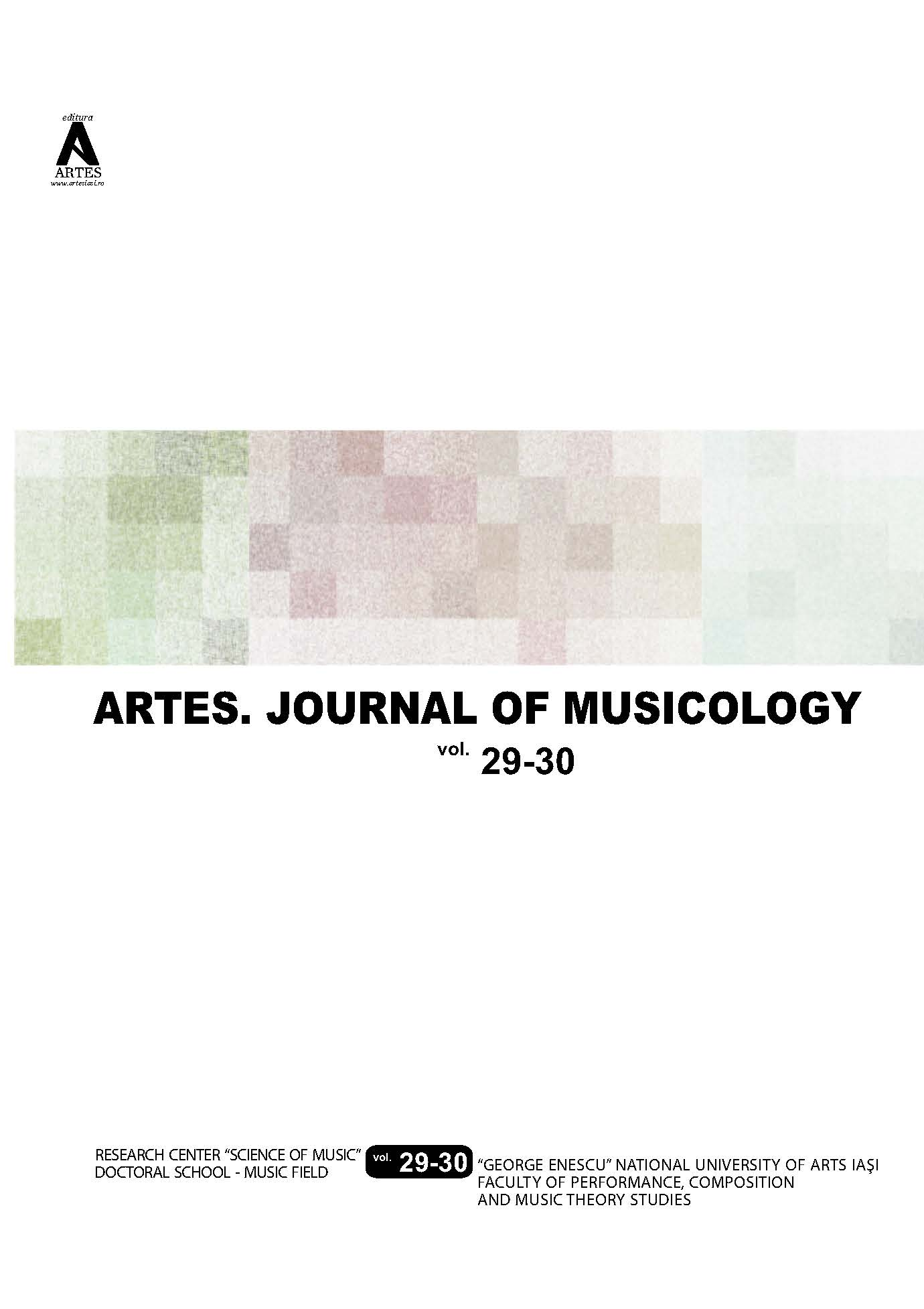Manuscript 110 from the “Dumitru Stăniloae” Ecumenical Library of the Metropolitan Church of Moldavia and Bukovina in Iași
DOI:
https://doi.org/10.35218/ajm-2024-0014Cuvinte cheie:
cheroubika-koinonika collection, Greek language, Chrysantine notation, classic Greek compositorsRezumat
The aim of the present work is to study the repertoire and to discover the possible musical sources used by the copyist to write Ms. 110, starting from its cataloguing. The codex uses Greek (predominantly) and Romanian languages and chrysanthine notation. The copyists (at least two) of the manuscript are anonymous, of Romanian origin. The codex was originally thought of as a collection of cheroubika-koinonika psaltic repertoire, but was later supplemented by another copyist with the festal axions in Romanian translated by Makarios the Hieromonk and prosomia in Greek. The repertoire in Greek includes a series of cheroubika and koinonika for Sundays and great holidays all over the year. The authors are Greek classical composers: Petros Lampadarios, Daniil Protopsaltis, Ioannis Protopsaltis, Chourmouzios Chartophylakos, Gregorios Protopsaltis, Petros Byzantios. The source of the Greek repertoire is most likely the set of volumes entitled Tαμείον Ανθολογίας / The Treasury of Anthology, which certainly represents one of the main musical collections through which the Chrysantine reform was implemented in the Hellenic area. The inclusion of the festal axions (of the great holidays of the year) in the manuscript is proof of the circulation and importance of this category of chants in the Romanian Principalities, after the introduction of the Chrysantine Reform through the significant contribution of their author, Makarios the Hieromonk.
Descărcări
Publicat
Număr
Secțiune
Licență
Copyright (c) 2024 Artes. Revistă de muzicologie

Această lucrare este licențiată în temeiul Creative Commons Attribution-NonCommercial 4.0 International License.

